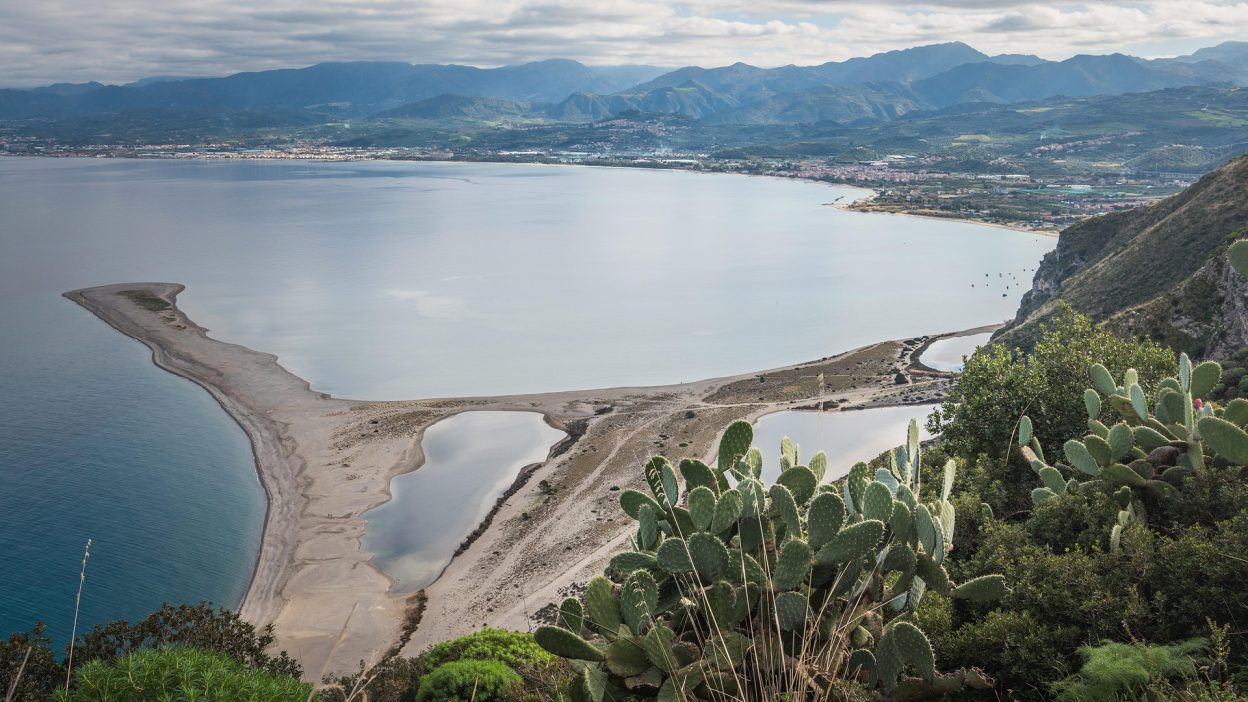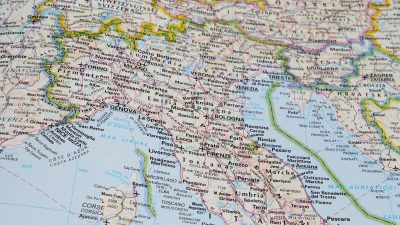The Forgotten Tempest That Shook Italy
1. A Storm from Hell: The Deadliest Tornado Outbreak in Italian History
The year 1851 remains a haunting memory in the history of Sicily, as one of the deadliest tornado outbreaks ever recorded struck the island with unmatched fury. While tornadoes are often associated with the United States, this rare and violent outbreak proved that Europe was not immune to nature’s wrath. The storms that raged across Sicily on 9 December 1851 were unlike anything the region had seen before, tearing through towns, devastating homes, and leaving thousands in shock.
Tornadoes in Italy are not unheard of, but what made the 1851 Sicily Tornadoes extraordinary was their sheer intensity and deadly impact. With winds likely reaching F4 or F5 intensity on the Fujita Scale, these tornadoes levelled entire communities and left a scar on the island’s history that has never truly faded. The event was so catastrophic that even centuries later, historians, meteorologists, and disaster analysts continue to study it, seeking to understand how such a powerful storm could have formed in the heart of the Mediterranean.
2. The Perfect Storm: How Did the Sicily Tornadoes Form?
Sicily’s geographical position makes it vulnerable to violent weather phenomena, but what led to the extreme conditions on that fateful December day? The answer lies in a combination of atmospheric instability, warm Mediterranean waters, and a powerful low-pressure system.
During early December 1851, a clash of warm, humid air from the Mediterranean and a powerful cold front moving down from northern Europe created the perfect conditions for severe thunderstorms. The presence of a strong jet stream further fuelled the instability, allowing rotating supercells to develop. These supercells, which are responsible for the most intense and long-lived tornadoes, unleashed their fury over Sicily, producing multiple twisters that left the region in ruins.
Some researchers believe that the tornadoes were part of a mesocyclone, a rotating thunderstorm system capable of spawning multiple tornadoes. Given the destruction patterns and historical accounts, it is likely that Sicily experienced a tornado outbreak rather than a single tornado, making the disaster even more devastating.
3. Death Toll, Destruction, and Horror: The Devastating Statistics
The 1851 Sicily Tornadoes left behind a trail of death, injuries, and unprecedented destruction. Though precise records are scarce, estimates suggest:
- Hundreds of deaths: Reports indicate that at least 500 to 600 people lost their lives, but the actual number could be much higher due to incomplete historical documentation.
- Thousands injured: Survivors suffered severe injuries, including crushed limbs, head trauma, and broken bones from collapsing buildings and flying debris.
- Entire villages flattened: Towns in central and eastern Sicily were among the hardest hit, with countless homes, churches, and businesses completely obliterated.
- Farms and crops destroyed: The tornadoes devastated agricultural land, uprooting trees, destroying crops, and leaving farmers destitute.
- A trail of ruin stretching over 100 km: The tornado paths covered a vast area, leaving miles of destruction in their wake.
The scale of devastation was so immense that many villages struggled to recover for years, with some communities never fully rebuilding.
4. Eyewitness Accounts: “The Sky Turned Black, and Then Came the Whirlwind”
Survivors described terrifying scenes as the tornadoes tore through Sicily. According to historical records, people recalled the sky turning an eerie shade of black, followed by howling winds that ripped apart everything in sight.
Some witnesses reported seeing people and animals lifted into the air, hurled hundreds of metres away. Entire houses crumbled like sandcastles, leaving families buried beneath the rubble. The sounds of screaming, roaring wind, and shattering structures created a scene straight out of a nightmare.
One survivor wrote in his personal journal:
“The wind screamed like a thousand demons, the heavens roared with fury, and then the earth shook as if it were Judgment Day.”
5. Why Was the Government Response So Weak?
Unlike today’s disaster response teams and meteorological warnings, the 1851 Sicily Tornadoes struck without any preparation. The lack of advanced forecasting technology meant that no one saw the disaster coming, leaving thousands at the mercy of the storm.
The response from the Italian authorities was slow, mainly due to poor communication, lack of resources, and political instability. Sicily, at the time, was under the rule of the Kingdom of the Two Sicilies, which was plagued by corruption and inefficiency. The disaster exposed how unprepared the government was to handle large-scale catastrophes.
While some relief was eventually provided in the form of food, temporary shelters, and financial aid, it was too little, too late for many survivors who had already succumbed to their injuries, starvation, or exposure.
6. The Long-Term Impact: How Sicily Changed After the Disaster
The 1851 Sicily Tornadoes left a permanent mark on the region, altering both its landscape and its people. In the years following the disaster, many survivors migrated to larger cities or even abroad, seeking a fresh start away from the trauma of the storm.
Economically, the loss of farmlands, livestock, and businesses pushed the region into financial hardship, from which some communities never fully recovered. Socially, superstitions and religious interpretations of the disaster spread, with many believing the tornadoes were a divine punishment.
Despite the devastation, no major changes in disaster preparedness were implemented, leaving future generations just as vulnerable to nature’s wrath.
7. Could It Happen Again? The Risk of Future Tornadoes in Italy
While extreme tornado outbreaks like the 1851 event are rare, Italy is still at risk of severe weather. Recent data suggests:
- Italy experiences an average of 30-50 tornadoes annually, mostly in the northern and central regions.
- Climate change is increasing the frequency of severe storms, making future tornado outbreaks more likely.
- Lack of tornado preparedness remains a significant issue in Italy, with no early warning systems or dedicated shelters.
- Coastal regions like Sicily are particularly vulnerable due to their proximity to warm waters that fuel severe storms.
Experts warn that another Sicily tornado outbreak could happen again, with even deadlier consequences if no preparations are made.
8. Forgotten but Not Gone: Why the 1851 Tornadoes Deserve More Attention
Despite being one of the deadliest tornado outbreaks in European history, the 1851 Sicily Tornadoes have largely faded from public memory. Unlike the famous tornado disasters in the United States, which are well-documented and studied extensively, this catastrophe has been buried by time.
One reason for this lack of recognition is the scarcity of historical records. In the mid-19th century, meteorology was still in its infancy, and there were no weather satellites or Doppler radars to track the storm. Most of what we know comes from eyewitness accounts, church records, and scattered newspaper reports, which often conflict in details. Additionally, because Sicily was not a global economic or political hub at the time, the international community paid little attention to the disaster.
Another issue is that Europe, in general, does not experience tornadoes as frequently as North America, leading many to assume that such extreme storms are not a concern. However, the 1851 Sicily Tornadoes prove otherwise, and failing to recognise their significance means missing a crucial opportunity to study and prepare for future tornadoes in the region. Experts argue that revisiting historical tornadoes could help improve forecasting models in Europe, particularly as climate change increases the risk of severe storms.
9. A Lesson from the Past: What Can We Learn from This Disaster?
The 1851 Sicily Tornadoes offer valuable lessons that could help prevent similar tragedies in the future. If there is one thing history has shown, it is that ignoring past disasters only increases the risk of future catastrophes.
Some of the key lessons include:
- Europe is not immune to deadly tornadoes – Many assume that only the US experiences extreme tornadoes, but history proves otherwise. Italy, Spain, and even the UK have all recorded violent tornadoes in the past.
- Advanced warning systems are crucial – In 1851, there were no weather forecasts, sirens, or alerts. Today, meteorological agencies in Europe must develop better tornado detection methods.
- Infrastructure must be tornado-resistant – Unlike earthquake-proof buildings, tornado-resistant structures are still not a priority in Italy, even though history shows the risk exists.
- Public awareness and education – Many people in Europe still do not know how to identify or respond to a tornado. Education campaigns could save lives in the event of another severe outbreak.
- Governments must act faster in disaster response – The slow and uncoordinated response of 1851 left survivors struggling for months. Italy needs a more efficient emergency response system for tornado disasters.
Despite nearly two centuries passing, the mistakes of the past continue to repeat themselves. If Italy and the rest of Europe fail to act, another tornado outbreak could cause just as much devastation as the one in 1851.
10. Conclusion: The Storm That Time Forgot
The 1851 Sicily Tornadoes remain one of the most violent weather disasters in European history, yet they are often overlooked in discussions about severe storms and natural disasters. The lack of awareness surrounding this event is a dangerous oversight, as it has left modern-day Italy unprepared for a similar catastrophe.
The storm was a brutal reminder of nature’s power, reducing entire villages to rubble and claiming hundreds of lives in a matter of minutes. The tragedy of 1851 should serve as a warning for the future, urging policymakers, scientists, and the general public to take tornado threats seriously.
As climate change brings increasingly severe storms, it is only a matter of time before another tornado outbreak strikes Europe. The question is, will we be ready this time?
FAQs (Frequently Asked Questions)
1. How many people died in the 1851 Sicily Tornadoes?
At least 500 to 600 people lost their lives, though the actual number may be higher due to incomplete records. Thousands more were injured, and entire villages were destroyed.
2. How strong were the tornadoes that hit Sicily in 1851?
Based on destruction patterns, experts estimate that the tornadoes reached F4 or possibly F5 intensity, meaning wind speeds exceeded 320 km/h (200 mph).
3. Could a tornado outbreak like this happen again in Italy?
Yes. While rare, Italy still experiences tornadoes, and climate change may increase their frequency. Without proper preparations, another deadly outbreak is possible.
4. Why was the government response so slow after the disaster?
In 1851, Italy lacked the resources, communication systems, and organised emergency response teams needed to handle such a large-scale disaster, leaving survivors to fend for themselves.
5. What lessons can we learn from the 1851 Sicily Tornadoes?
The disaster highlights the need for better tornado detection, stronger infrastructure, faster disaster response, and public awareness in Europe to prevent future tragedies.




